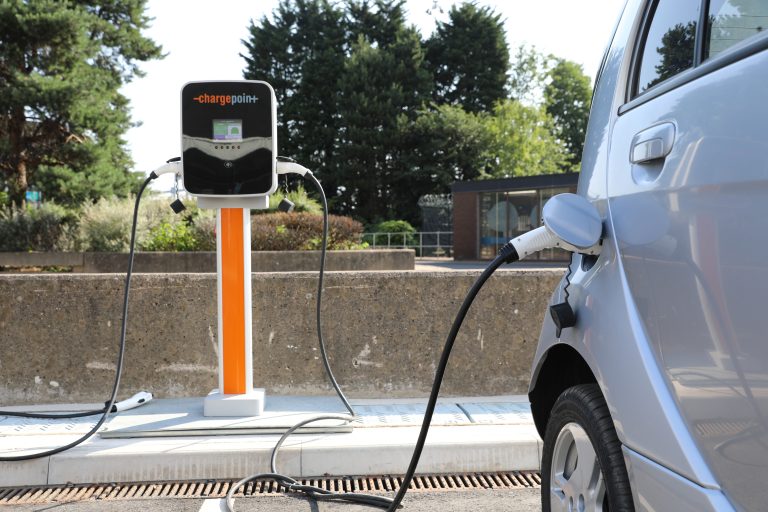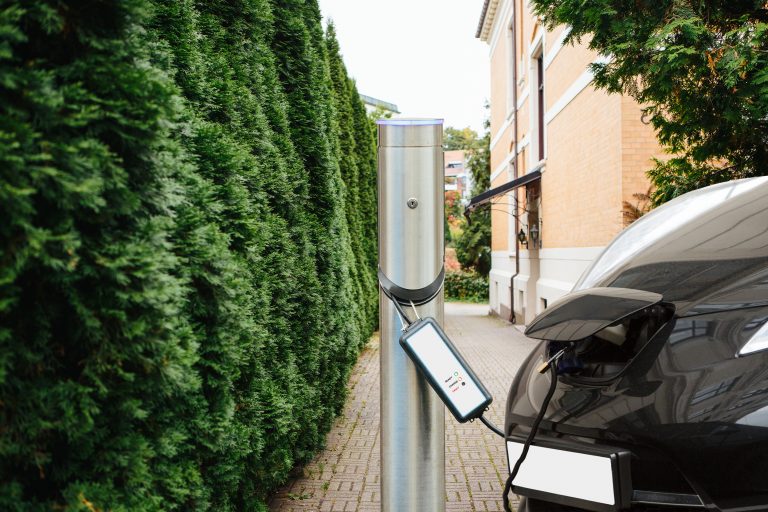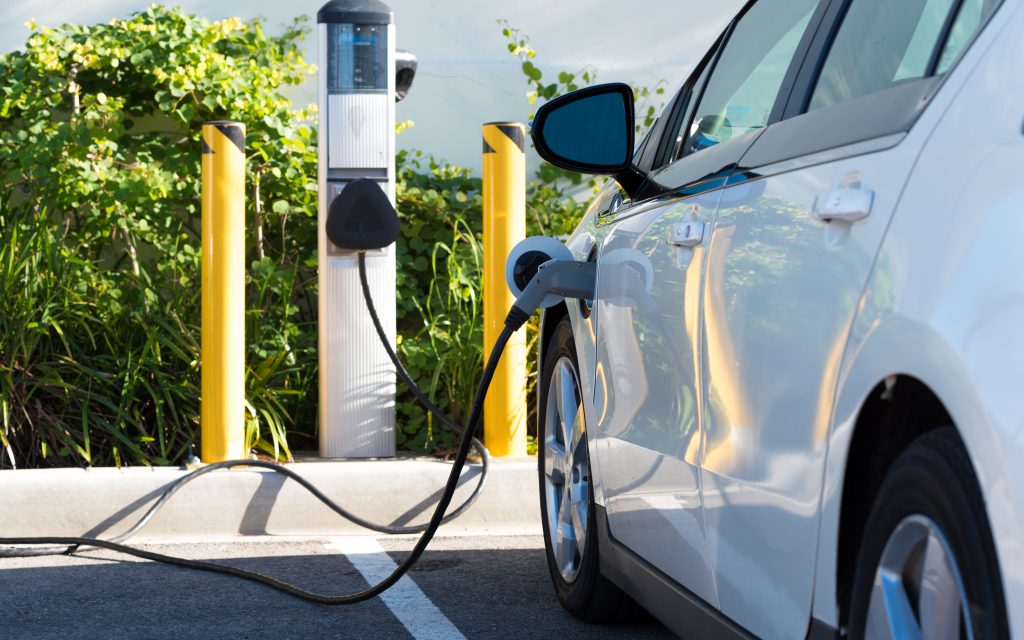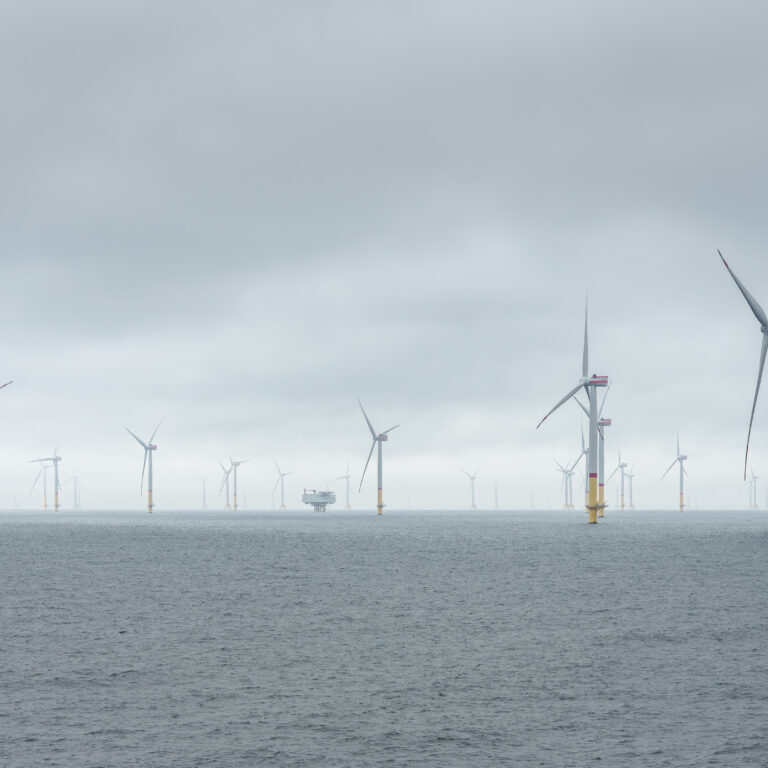When you’re travelling to another continent there are few things more irritating to forget than a plug adapter. Thankfully, they’re relatively easy to buy, even if it means putting holiday plans on hold for half an hour.
But what if rather than having the wrong plug to charge a phone abroad, you found yourself unable to plug in your electric vehicle (EV) on your own street?
It’s a situation that could soon become a reality as different vehicle manufacturers release new models and different energy and charging companies expand their recharging networks, not all of which can connect with each other.
Fragmentation among charging networks, confusing cables and meeting increased electricity demand are all challenges the UK needs to solve to enable all-electric vehicles and cut transport emissions.

EV charging at Drax Power Station, North Yorkshire
Around the country there are more than 17,600 public charge points for EVs to power up at, offered by 35 different charging networks. While some offer connectors that plug straight into cars, others require motorists to use their own cables and connect the ports.
But, similarly to how different models of smartphone often require a different type of charging cable, not all EVs can plug into to the same chargers or use the same protocol to link their batteries to the charging system. It’s something that, without standardisation, could lead to fragmentation and become a major pain point for electric vehicle owners, as well a barrier to more widespread adoption.
Currently car makers in Germany are united in backing a what’s known as combined charging system (CCS), but Japanese manufactures support making CHAdeMO (standing for Charge de Move) the standard protocol, which requires a different type of connecting cable to CCS.
Tesla uses its own network Supercharger points, and although its cars can recharge at other charge points (if the driver has their adapter with them), other manufacturers’ vehicles can’t yet recharge at Tesla Superchargers.
Then there’s China. The world’s largest market, where 200 million EVs are expected to be on the roads by 2040, uses an entirely different, GB/T system. Keen to avoid missing out on such a lucrative market Tesla has added a BG/T charging port to its model X vehicles.
Currently, Europe uses the same charging infrastructure as the UK and the larger charging networks operate the same service across the continent. As is the case when setting out on a long drive anywhere though, it’s worth checking where charge points are before setting off.
It may be confusing but it’s still relatively early days for the EV charging industry, and like VHS vs Betamax, there could yet be consolidation across the global market.
Slow, fast, rapid

Expanding where drivers can recharge is key to bringing more EVs onto roads, and in efforts to help grow this, the government has put forward a proposal that all new homes, business and street lights should offer charging points. However, all points do not charge equally and are divided into slow, fast and rapid.
Home charging will be an important part of EV infrastructure, with overnight charging seen as key to managing the increased electricity demand created by substantial EV adoption. It is, however, the slowest and can take six to 12 hours to fully recharge a vehicle.
Fast chargers are those normally found on streets or public destinations, like car parks. For people unable to run a cable from their home to their EV, these will be crucially important, however, they typically require drivers to bring their own connection cable to hook up and can take between two and five hours to fully recharge, depending on the vehicles.
By far the fastest method of EV charging is through rapid charging, which is most-commonly found at motorway service stations. These charge points provide connectors for drivers to plug in and can recharge an EV to 80% in just 30 minutes.
Connector fragmentation, however, could cause some issues at these sites. The likely solution – for the time being – is offering multiple different options, such as at Shell’s recharge points, which house both rapid CCS and CHAdeMO connections, similarly to how traditional pumps might offer both petrol and diesel.
More and smarter charging
As the UK heads towards the 2040 deadline for the end of new petrol and diesel vehicle sales, having the necessary infrastructure to support EV adoption is a key issue to address, according to PwC.
Major companies are making inroads towards addressing this need, with oil giant BP acquiring Chargemaster, the country’s largest charging network in June. The government is also encouraging further growth through a £400 million fund to be allocated to companies building charging infrastructure.
In addition to allowing more EVs to recharge, smart-grid technology will play an important role in managing how so many are charged without causing surges in demand, or tripping out home or business premises circuits. This can also offer opportunities, such as vehicle-to-grid storage, that enable the National Grid to treat connected EVs like batteries at times of stress.
Electric vehicles are still beginning to appear en mass in the UK. However, their potential to reduce transport emissions makes them an important investment for the government, vehicle manufacturers and energy companies building charging networks. Spreading an understanding of how to charge EVs will help drive returns on those investments.











